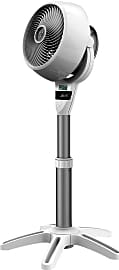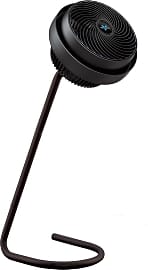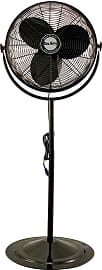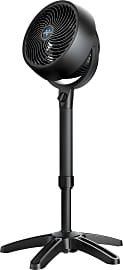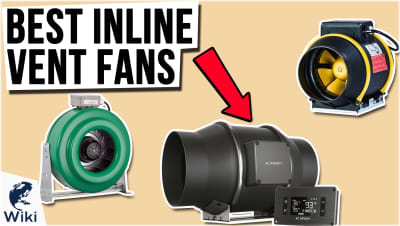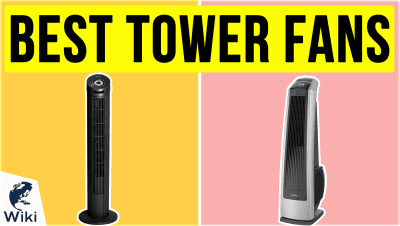The 10 Best Pedestal Fans

This wiki has been updated 40 times since it was first published in May of 2016. Looking for a way to cut down on that hefty summer energy bill? Try one of these pedestal fans. Unless you're dealing with a case of extreme heat or humidity, there's a good chance that you can count on one of these models to keep you cool and comfortable, and at a fraction of the cost of running your central air. For users living without air conditioning, selections like these are essential. When users buy our independently chosen editorial picks, we may earn commissions to help fund the Wiki.
Editor's Notes
March 22, 2021:
With all of our choices for this category continuing to be excellent selections, it was a simple round of update for us that saw no real need for us to make any new omissions or inclusions. We did notice that the OEMTools Orbit appeared to unavailable through a couple of major online vendors, but as the item was identified as discontinued, and it still appeared to be available through several alternate sources, we judged that this lack of availability was probably resultant of a temporary supply shortage, and thus decided to let it hold its spot on our list until our next round of updates.
Oscillating fans can be a great asset and play an important role when it comes to cooling all sorts of spaces. However, when it comes to locations that generate a lot of heat – like grow rooms and workshops that house a lot of heavy equipment – intermittent air movement will often not be enough. To rig up a system that circulates air in and out of your room, you’re going to want to familiarize yourself with inline vent fans.
January 29, 2020:
During this round of updates, we eliminated the Lasko Cyclone and replaced it with the company’s tower-style Lasko 2535. We also removed the Pelonis Turbo and Genesis High Velocity to make room for some new additions, noting that the latter was a virtual duplicate of an existing selection. In place of our dethroned rankings, we added the Nash PF-1 – an otherwise basic model that sets itself apart by offering Wi-Fi connectivity and smart home compatibility, and the Dyson AM08 – an impressive design from a company that’s known for its top quality.
A few things to consider as you shop:
Movement: Of course, moving air is an implicit feature for any fan, but the way the fans themselves move can really affect how well they cool a room. By this, I mean that an oscillating option like the Klarstein Silent Storm has a distinct advantage over a stationary model like the OEMTools Orbit. Many offerings also include tilt functionality, allowing you to adjust the direction of air movement vertically. In the absence of tilt functionality, the Lasko 2535 includes adjustable louvers that serve the same purpose.
Control: The Vornado Energy Smart offers a staggering 99 speed settings, but it’s questionable just how badly you need, say about, 96 of them. The additional control offered by the additional settings is nice, but most people will be ok with a simple, three-speed option like the Air King Industrial (if you’re looking to land somewhere in the middle, the Klarstein Silent Storm has 12). In my opinion, the real conveniences worth looking for in the control department are timer options – featured on models such as the Vornado Energy Smart 6803DC and Nash PF-1, and remote controls – featured on models like Klarstein Silent Storm and, again, the Vornado Energy Smart 6803DC.
Noise: If you’re looking to cool a large space like a metal fabrication shop or heavy equipment garage, where noise pollution already runs rampant, then you’ll probably do just fine with an option like the OEMTools Orbit or ATD Tools 30330, which run a bit loud, but move some serious air. However, if you’re looking to purchase this fan for the living room in your one-bedroom, minimalist apartment, the last thing you want is a fan roaring at you while you watch television. If that situation sounds something like yours, then consider options like the Dyson AM08 and Lasko 2535, which still do a good job, but quietly.
Don't Sweat It, Chill Out
The optimal space for a pedestal fan to provide the best circulation possible would be in one of a room's corners facing toward the center.
Depending on where you live, the heat and humidity can get intense during the summer months. You might be inclined to blast your central air conditioner before considering rising energy costs. A table fan might not be powerful enough to push a significant amount of air to cool you down. However, a larger pedestal fan not only has the capacity to push a higher volume of air, but it can save you a significant amount of money on your monthly utility costs when the weather gets hot. There's nothing wrong with air conditioning, per say, but a fan can deliver very similar results without breaking the bank.
Also known as a floor fan, the pedestal fan is usually powered by an electric motor and operates in much the same way as conventional fans. Many will feature a rotating arrangement of three to five blades that act on the air around them. The assembly on which the blades rotate is called an impeller (or rotor) and is typically protected within a case. Setting the pedestal fan apart from other types of fans include its height, the size of its individual blades, and its ability to direct large volumes of air in different directions.
Most pedestal fans leverage the wind-chill effect, which is the technical description of the human body's perceived decrease in temperature felt on the skin by the flow of air. To put it into more of an everyday context, consider what happens when it gets really hot outside. You come in from the heat, sit down on your sofa, and blast a floor fan in front of your body to help you cool down faster than you would without one.
This blast of air from your fan makes contact with the sweat on your body, which causes the sweat to evaporate and your body heat to decrease. The final result is that you feel more comfortable, thanks to the fan's accelerated flow of air towards your body. The more sweat a person has on their body at the time, the greater the effect of wind chill there will be. Because the pedestal fan sits higher than an ordinary table fan, it is more apt to provide this wind-chill effect.
Pedestal fans offer several benefits. Aside from their ability to save on energy costs, they significantly increase air circulation throughout a large room. The optimal space for a pedestal fan to provide the best circulation possible would be in one of a room's corners facing toward the center. Many electric pedestal fans are also capable of oscillating to ensure maximum coverage and air flow to both sides of a large room.
Their heads can often be tilted up or down as well. Depending on the style, the fan will either have buttons or a built-in dial to control the speeds of its blades, which comes in handy if the temperature fluctuates. Finally, the pedestal fan can be used in conjunction with an air conditioning vent to help circulate the freshly-conditioned air throughout a room more quickly.
A Brief History Of Pedestal Fans
The history of fan technology dates back thousands of years, starting from the use of small, handheld devices to the mechanical and electrical fans used today. The earliest known fans date to around the year three thousand BCE during the times of the ancient Greeks and Romans. They were made from a variety of materials, including feathers, jewels, paper, and wood. They were used as both accessories and as a means to keep cool. The more widely-known handheld fans are thought to have originated in China as early as the second century BCE.
The more widely-known handheld fans are thought to have originated in China as early as the second century BCE.
By the seventeenth century, Chinese fans were exported in large quantities to Europe where they became a symbol of wealth and power. Around that same time, the human-operated Indian punkah fan became popular. This fan was attached to the ceiling and operated using a series of pulleys. English architect Sir Christopher Wren also designed an early ventilation system for the Houses of Parliament (also referred to as the Palace of Westminster) using bellows to circulate air.
One of the first electric fans invented was between 1882 and 1886 by Los Angeles resident Schuyler Skaats Wheeler. Wheeler's two-bladed fan was marketed by the Crocker & Curtis Electric Motor Company. By the beginning of the twentieth century, mass production of electric fans for home use became more common, particularly with the industrial advances of steel manufacturing in the 1920s.
By the 1950s, fans were available in multiple colors, shapes, and sizes. One of the more popular trends for modern pedestal fans are seen in their ability to leverage bladeless technology to push large amounts of air into a room.
Make Your Choice A Breeze
Energy efficiency and the power to push enough air to keep you and your family cool are top priorities for a good pedestal fan. If blades concern you (and you have children or pets around and fear possible injury), some of the most cutting-edge fans offer bladeless operation that is both safe and reliable.
An enclosed dome-shaped base works best for placement on hardwood floors, whereas a fan with multiple extendable feet will provide additional support on plush carpeting.
Quiet operation is another big consideration. A pedestal fan is usually of considerable size, so one must consider the room in which they intend to place it and how loud it may be. A pedestal fan placed on a thick carpet may help to minimize the noise from its blades or the sound of the air coming from it. Then again, some people quite enjoy the white noise that a fan produces, especially if it is to be placed in a bedroom. Some people can't even get to sleep without the sound of a fan running, so the type, size, and noise level chosen really depend on personal preference.
Regarding floor types, the base of the fan should also be taken into consideration when making a decision. An enclosed dome-shaped base works best for placement on hardwood floors, whereas a fan with multiple extendable feet will provide additional support on plush carpeting.
Some pedestal fans also come with their own remote controls, which can be helpful if you're very hot, tired, and don't feel like having to get up to adjust the fan's dial or fool with extra buttons. That said, the fan should have adjustable speed settings as well as the capability to oscillate.




